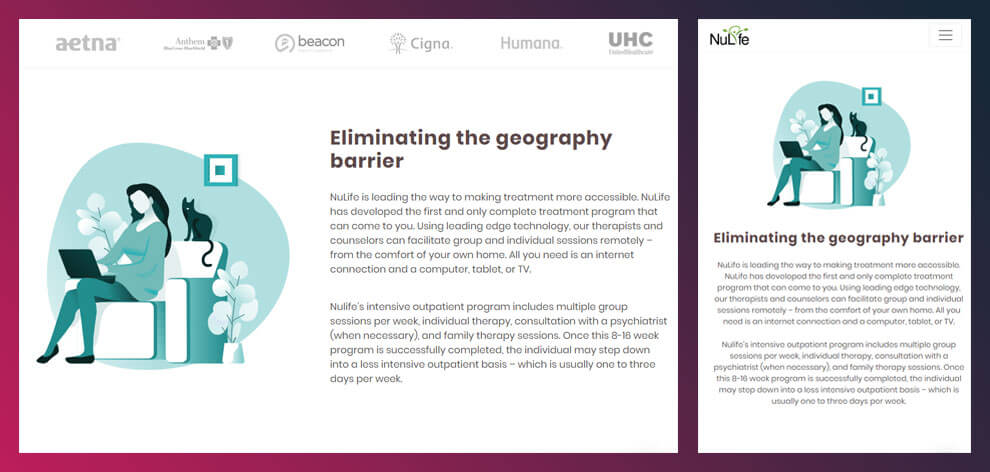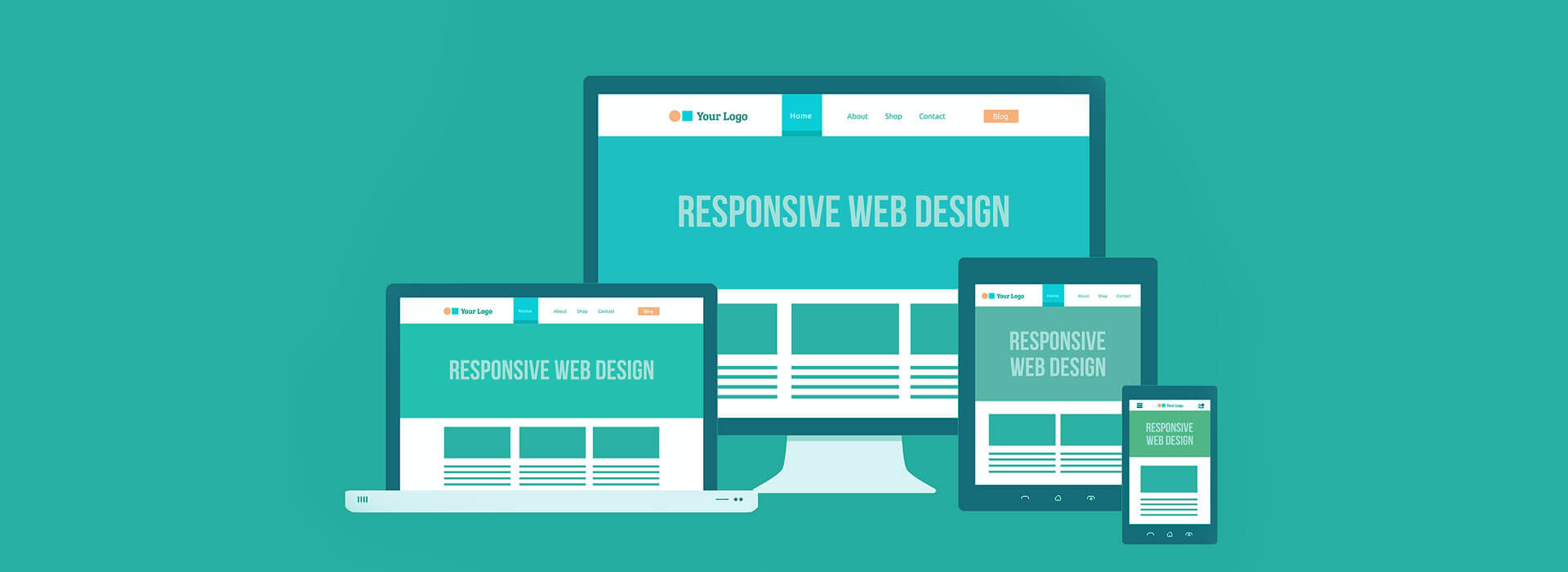Responsive web design means having one website that fits all screens and devices. From Large 1920px wide monitors all the way to cell phones that have 340px wide displays.
Is there an actual need for RESPONSIVE WEB DESIGN (RWD)?
Some may argue that digitalization is a process that made everything easier and smoother, but it has also brought up a few new challenges, i.e. having a website that fits various devices.
Whether you are offering a service, solution, or product, the website helps you attract potential prospects and it represents your business, so it is important to have a website that offers the best user experience. The landscape is constantly changing, and keeping up with technological development comes naturally when having a website.
This means that the website needs to be adjusted to new devices and systems regularly.
Even though people still use PC while browsing the internet, the fact is that it is not the only or the most common device we use to go online anymore. With operative systems such as Android, iOS, and others, smartphones are there to take over the lead when it comes to the main internet medium.
It is predicted that by the end of 2019 mobile devices will make up 63% of global internet use. “Around 50% of global internet usage happens through mobile phones.” Besides, people are using tablets, iPads, netbooks, and so on. Moreover, because of the various devices which we use to browse the web, one of the biggest challenges when creating a website is making it compatible with and responsive to different devices.
According to research, about, 81% of American adults own a smartphone and 63% of them use it to access websites.
Based on the report from 2017, 95% of Facebook users accessed their accounts via a mobile device.
These are some of the reasons why it is of utter importance to make your website compatible with all devices and give the best user experience through graphics and resolutions.

WHAT IS RESPONSIVE WEB DESIGN AND WHAT ARE THE PRINCIPLES BEHIND IT?
It was 2010 when Ethan Marcotte said coined term responsive web design. He advised designers that it is better to treat all of the designs as facets of the same experience and make them more adaptive to the media that renders them.
Nowadays, RWD has become the most important thing when creating a website. It is especially significant for those building an online customer base. Responsive design is there to give users the best website experience; not only in viewing but in browsing as well.
By having a responsive website, you avoid blurring and pixelation of images as well as the scattering of the content and you prevent customers from leaving the website. The study shows that almost 8 in 10 customers would leave the website if it does not display as it should on their device.
Three main features help designers create a responsive website. Those technical ingredients are:
- Fluid Grids – this feature is used to resize the content so it can fit the screen. Besides being essential for having consistency on different devices, another benefit for the designers is that it saves time and money since the designer is required to update only one version of the website.
- Media Queries – this is a feature that detects which type of device you are using when accessing the website and it adjusts the page size based on the device.
- Flexible Media – this allows the creation of designs that can be used on different devices regardless of the size or the shape of the design. It helps to adjust the design according to the user’s device.
RESPONSIVE WEB DESIGN – necessity not luxury
Some of the facts and reasons to have a responsive website design are:
- In 2012, people performed more than half of the local searches on a mobile device.
- 61% of people have a better opinion of brands that offer a good mobile responsive experience of their website.
- According to Google, if a user visits your website, and it is not responsive, it may hurt your business. There is a 61% chance that they will leave your site and go visit a different one (most likely a competitor’s website).
- It’s also said that if they have a positive experience with your responsive website, they are 67% more likely to buy a product or use a service.
- Most people access social media on cell phones. Once they click the ad and land on your site, if it’s not responsive they will leave it in a matter of a few seconds. That may damage ad campaigns that you might be running for your E-Commerce business.
- 57% of internet users agree on not recommending a business whose website is not well designed for a mobile phone.
- According to 86% of adults, a company’s website should be as good or better when viewed on a mobile phone than it is on a PC.
IF YOUR WEBSITE IS STILL NOT RESPONSIVE, NOW IS THE TIME TO REDESIGN IT WITH RESPONSIVENESS IN MIND
- A fact section above this one shows you some of the benefits of having a responsive website. Apart from those facts, there are more reasons why you should have a responsive website.
Google favors websites that are designed with responsiveness in mind.
You serve one website for both desktop and mobile visitors, so it is easier for Google to crawl your pages. That results in better ranking in Google searches. It also solves issues related to duplicate content. - A mobile responsive website is easier and better for SEO (Search Engine Optimization). A process of optimizing a website so it ranks higher in Google search for targeted keywords.
- It will help you reduce your website’s bounce rate since your visitors will not be put off by bad user experience on their cell phones.
- Responsive web design increases site usability. This makes your users happier, and the happy user will return to your website more often.
- It is easier for you to manage one responsive website than multiple websites. This is why a responsive website is much preferred over separate websites for desktop screens and mobile phones.
- Responsive design allows you to keep track of who visits your website via Google Analytics.
- A responsive website is better suited for load time optimization, which is important because the standard is that a website should load in 1 – 2 seconds according to Google PageSpeed Developers standards. And load time optimization is also a key factor in whether your website visitor (that might be a potential lead), will stay on your website or leave it asap.
LET’S IMPROVE YOUR WEB PRESENCE
Responsive web design has been a standard in the web design and development industry, and here at WebRedone we design and code websites following the latest industry standards and best practices. Every single website that we designed and developed is responsive and load time optimized.
Whether you need a new website designed or you have an old website that is still not responsive and could benefit from redesign and load time optimization, feel free to reach out via our contact form and we will be more than happy to help improve your web presence.

